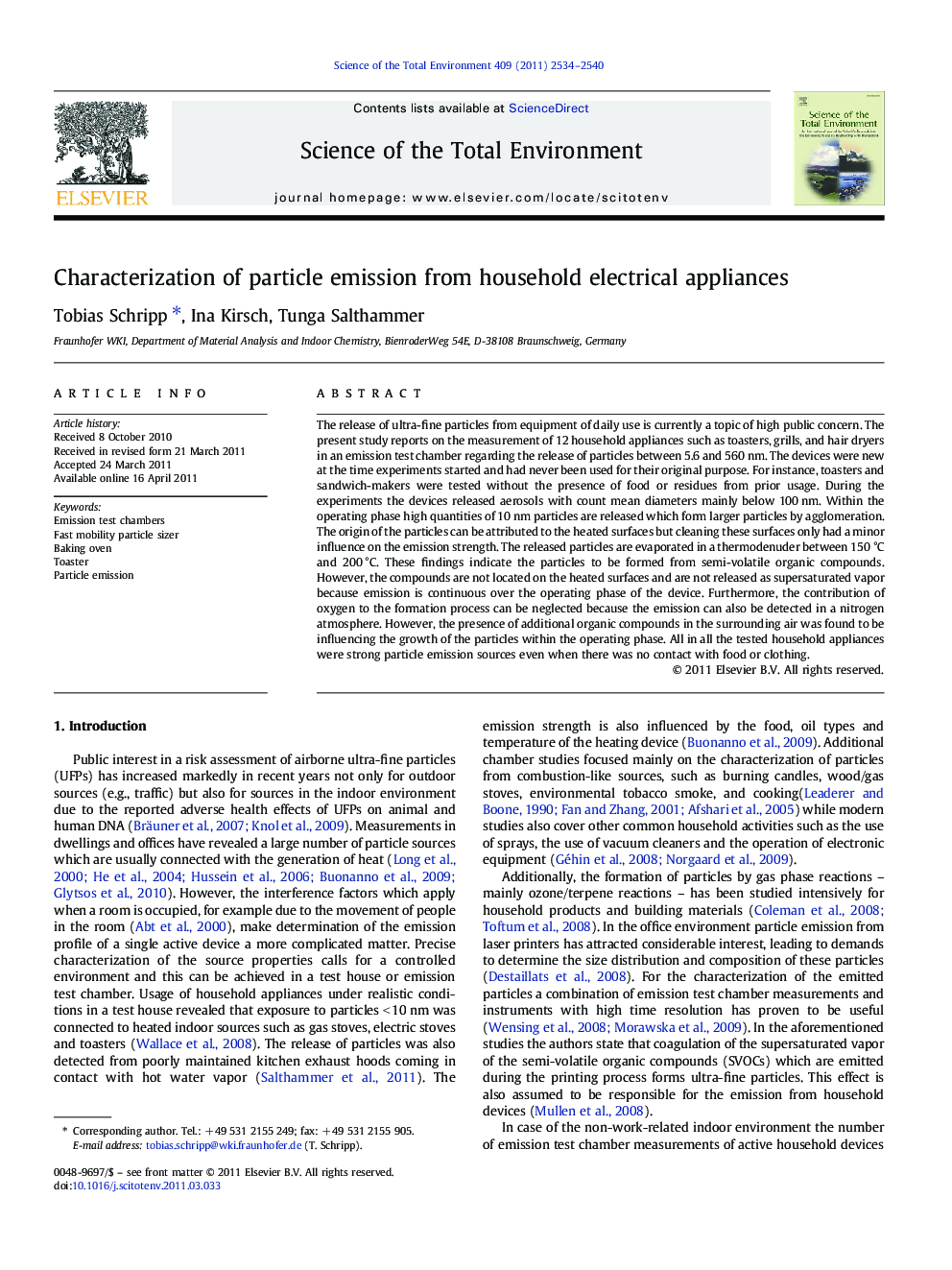| کد مقاله | کد نشریه | سال انتشار | مقاله انگلیسی | نسخه تمام متن |
|---|---|---|---|---|
| 4430138 | 1619849 | 2011 | 7 صفحه PDF | دانلود رایگان |

The release of ultra-fine particles from equipment of daily use is currently a topic of high public concern. The present study reports on the measurement of 12 household appliances such as toasters, grills, and hair dryers in an emission test chamber regarding the release of particles between 5.6 and 560 nm. The devices were new at the time experiments started and had never been used for their original purpose. For instance, toasters and sandwich-makers were tested without the presence of food or residues from prior usage. During the experiments the devices released aerosols with count mean diameters mainly below 100 nm. Within the operating phase high quantities of 10 nm particles are released which form larger particles by agglomeration. The origin of the particles can be attributed to the heated surfaces but cleaning these surfaces only had a minor influence on the emission strength. The released particles are evaporated in a thermodenuder between 150 °C and 200 °C. These findings indicate the particles to be formed from semi-volatile organic compounds. However, the compounds are not located on the heated surfaces and are not released as supersaturated vapor because emission is continuous over the operating phase of the device. Furthermore, the contribution of oxygen to the formation process can be neglected because the emission can also be detected in a nitrogen atmosphere. However, the presence of additional organic compounds in the surrounding air was found to be influencing the growth of the particles within the operating phase. All in all the tested household appliances were strong particle emission sources even when there was no contact with food or clothing.
Research Highlights
► Active household appliances release ultra-fine particles (d < 100 nm).
► Particle emission does not require the presence of food or clothing.
► The emitted particles are volatile and evaporate between 150 °C and 200 °C.
► The particles are not formed by oxidative processes.
Journal: Science of The Total Environment - Volume 409, Issue 13, 1 June 2011, Pages 2534–2540